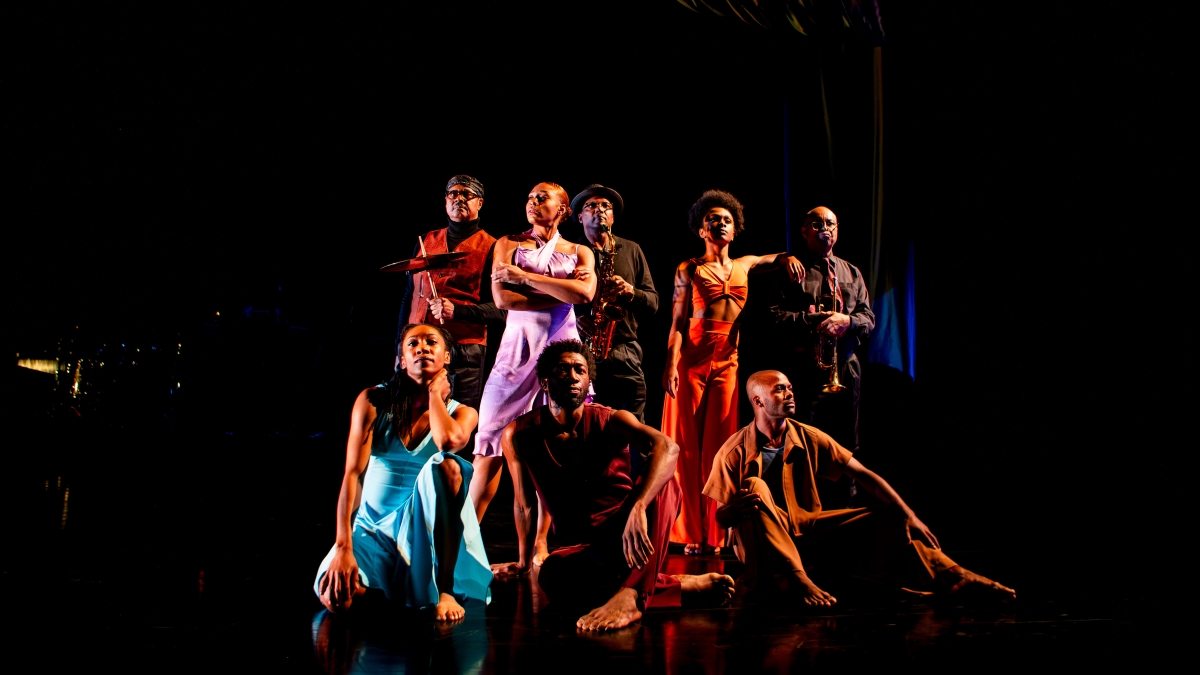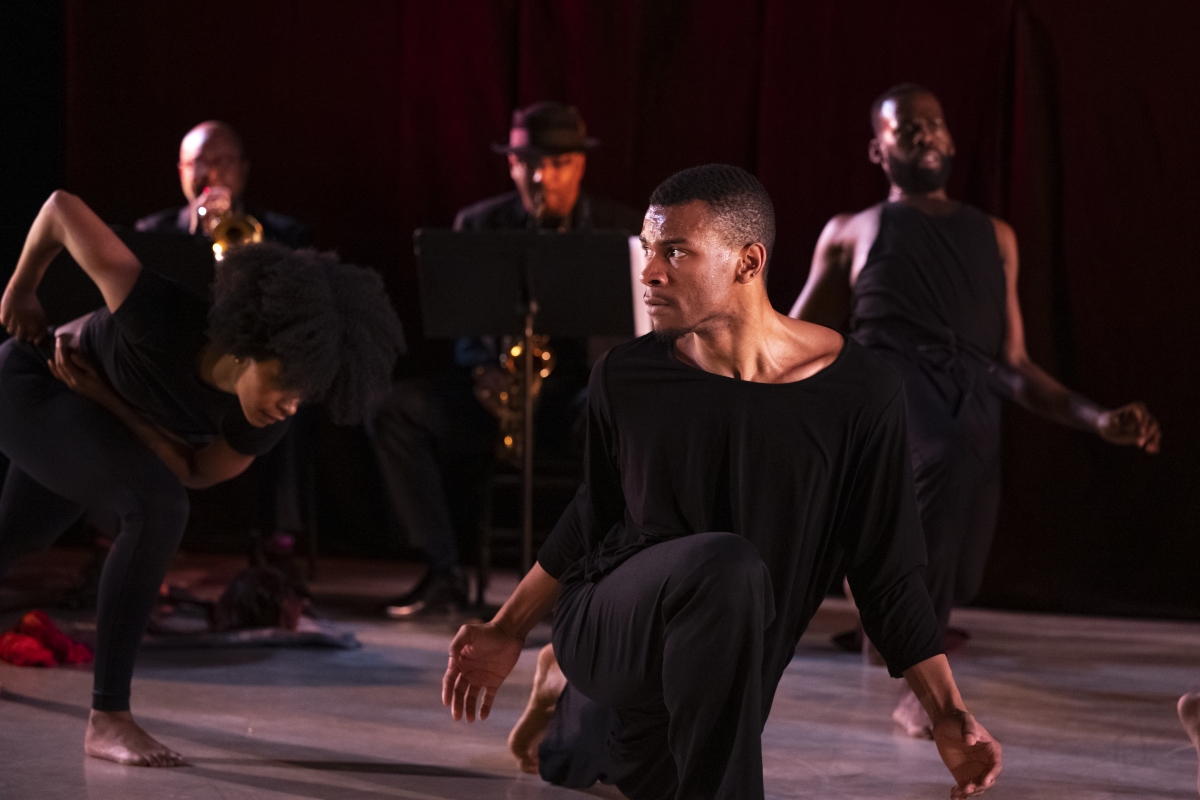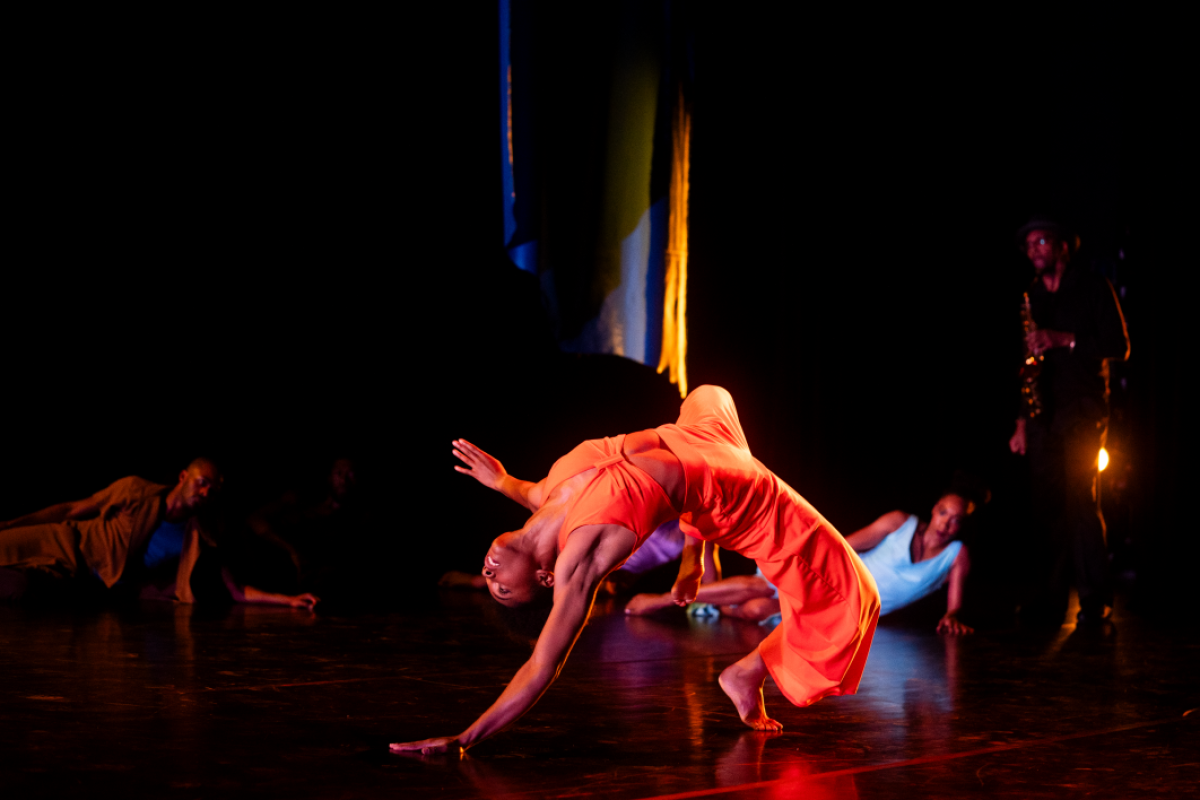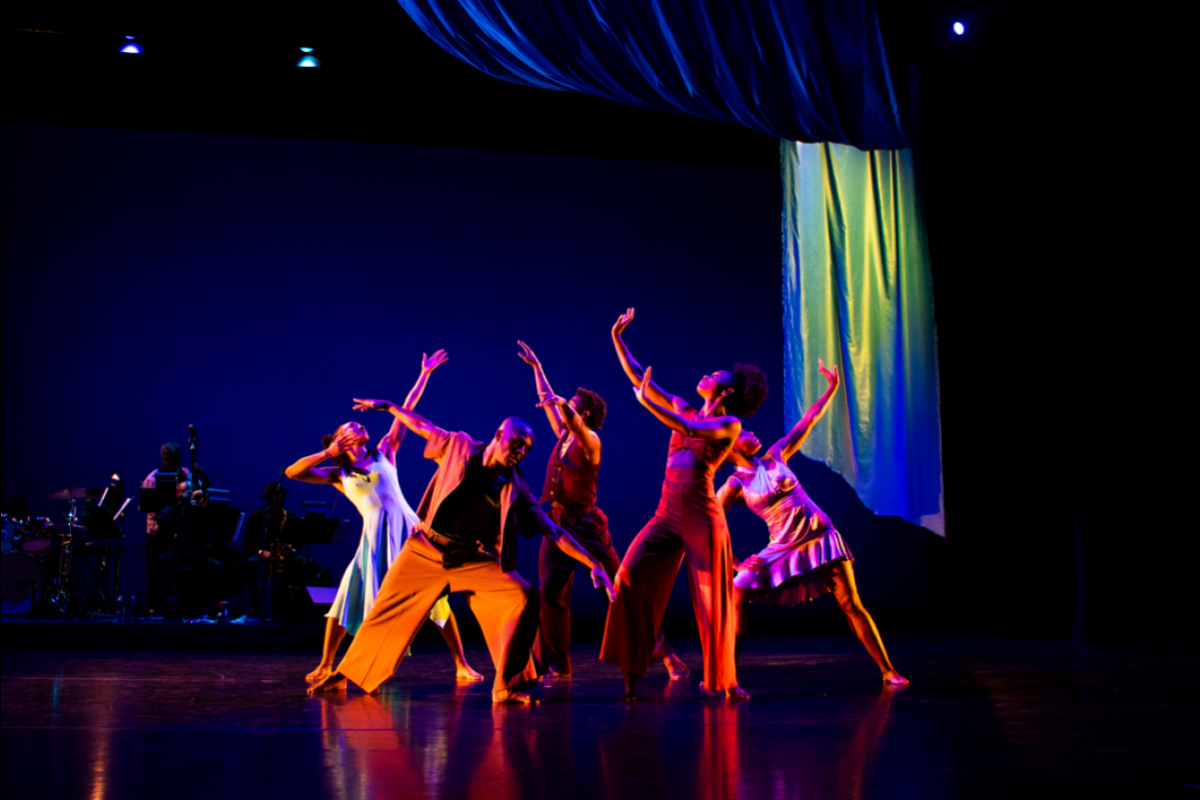Dance is music in motion in Dianne McIntyre’s 'In the Same Tongue'

The performers of "In the Same Tongue" pose onstage during a rehearsal. Photo by Kameron Herndon
Dianne McIntyre has based her decades of experience as a dancer and choreographer on one ideology: Dance is music, moving.
Event details
"In the Same Tongue"
7 p.m. Jan. 27
ASU Gammage
Get tickets
McIntyre’s contemporary dance piece "In the Same Tongue" takes this line of thinking and shapes it into an up-close-and-personal experience for those in attendance on Jan. 27 at ASU Gammage.
Choreographed and directed by McIntyre, with live music composed and arranged for the production by Diedre Murray, the work explores dance and music speaking to one another.
McIntyre, who has choreographed for world-renowned dance companies such as Dance Theatre of Harlem, along with four Broadway shows, said her initial purpose for creating "In the Same Tongue" was to highlight dance and music in collaboration together.
The company of five dancers and four musicians share the stage, bringing theatrical expression to every move, every note, every word.
“As it grew and developed, I expanded the piece to be more than the communication between dance and music, but also communication between human beings in terms of words, meaning, tones that people use and silent communication,” McIntyre said. “Are we speaking the same language? Is the language grating against each other? Do we come together in not knowing that we come together?”
In the same way that jazz musicians are able to take a theme or motif and develop it in their own creative way, so too do the performers in this new work.
“The dance and music are all part of the same band,” McIntyre said. “I give them the freedom in certain places where the dancers and musicians make their own choices, and there are some improvised elements between them.”
The musical ensemble is comprised of a trumpet player, a woodwind player who switches off between saxophone and flute, an upright bass player, and a drummer.
Dynamic vignettes ignite the stage, including McIntyre’s own voiceover of autobiographical stories — such as the musical influence of the Black Arts Movement — and the poetry of Ntozake Shange, vocalized by the dancers onstage.
“These voiceovers primarily talk about how I have come to feel that dance and music are one, and how I connect with music from different time periods. All those things that have affected me,” McIntyre said.
McIntyre said much of her inspiration comes from dance in its purest forms, which actually led her on a trip to Arizona decades ago. Prior to the 1970s, McIntyre had only flown over Arizona in an airplane. As she delved further into her career, McIntyre had the urge to visit Native nations where there was a wealth of generational knowledge in dance and storytelling.
“I was very taken by cultures where people retained over centuries the dance and music from their peoples,” she said. “I took a road trip with a friend, and we traveled across the country to experience some of the dances of the people of Native nations.”
McIntyre's work doesn't stop at the stage. As an ASU Gammage Beyond artist, she and her company are spearheading several ASU residency activities leading up to the performance.
Her residency includes class visits to Contemporary Modern Dance and Graduate Creative Practices, courses that help students clarify what their movement language is as a dance artist and how that aligns with their own values and aesthetics across their own dance practices.
McIntyre will also be guest speaker at an ASU African American Faculty and Staff Association discussion with Professor Neal Lester.
McIntyre hopes that for the dancers in the audience who are seeing the show — such as ASU School of Music, Dance and Theatre students — they notice something new in the connection between dance and music that’s different from performing with recorded music.
“I hope those who watch the show experience the joy of dance and the power of music,” she said.
More Arts, humanities and education

Local traffic boxes get a colorful makeover
A team of Arizona State University students recently helped transform bland, beige traffic boxes in Chandler into colorful works of public art. “It’s amazing,” said ASU student Sarai…

2 ASU professors, alumnus named 2025 Guggenheim Fellows
Two Arizona State University professors and a university alumnus have been named 2025 Guggenheim Fellows.Regents Professor Sir Jonathan Bate, English Professor of Practice Larissa Fasthorse and…

No argument: ASU-led project improves high school students' writing skills
Students in the freshman English class at Phoenix Trevor G. Browne High School often pop the question to teacher Rocio Rivas.No, not that one.This one:“How is this going to help me?”When Rivas…




